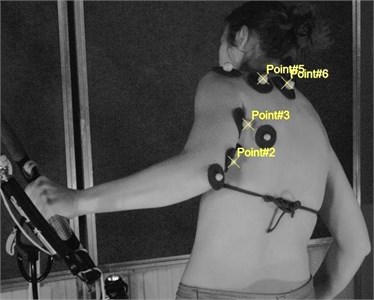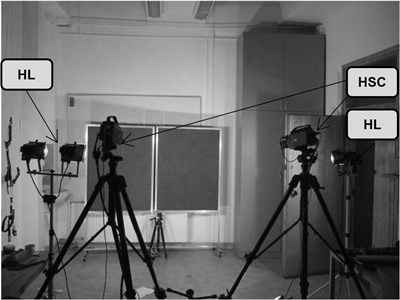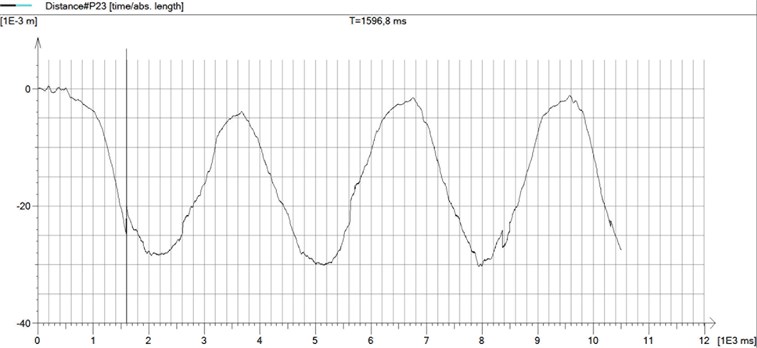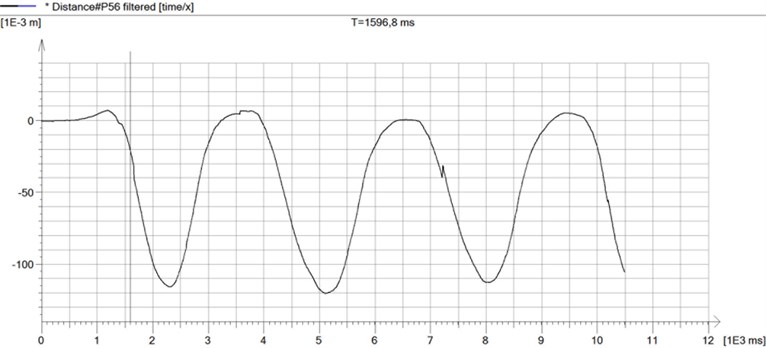Abstract
Kitesurfing is a relatively recent phenomenon with raising popularity worldwide – a recently developed extreme water sport considered a high-risk injury sport. It combines elements of several other sports, in particular sailing, surfing, windsurfing, wakeboarding, and snowboarding. The main purpose of authors’ research in the present paper is to use a vision system technique for measuring a kitesurfer’s body movements in order to analyze group of activated muscles during take-off and handle pass maneuver reproduced in the laboratory conditions.
1. Introduction
Like any sport discipline kitesurfing involves risk of injury. Freestyle kitesurfing is one of the most traumatic sports -disciplines and, at the same time, the most popular one in Poland [1]. Freestyle competitions are held in strong winds, with small, fast kites and without high waves. Heats consist in making better tricks than competitors, which leads to generating newer and newer and more difficult maneuvers. Unfortunately, it often leads to injuries. The authors of this article analyzed various freestyle maneuvers and followed injury statistics among Polish top kitesurfers. Thanks to the analyses and further investigation of the most critical maneuvers we can better customize the training plan, modify certain behaviors or deliberately avoid the manoeuvres causing most injuries. Before proposing a hypothesis on which behaviors and which maneuvers are destructive to human body structures, the authors selected two movements that were then examined in connection with injuries of the rotator cuff area. The first is the take-off maneuver. It is a basic maneuver requiring no special skills from the surfer [2]. As a basic trick, it serves as a reference for subsequent measurements. Handlepass was the second examined freestyle trick. It is an advanced trick, which is a base for a number of maneuvers performed during the competitions. The main difficulty of this maneuver is to put the control bar (a bar a kitesurfer holds and with which he/she controls the kite) behind his/her back during a jump. It is a complex maneuver to perform, involving many upper body muscles (abdominals, back muscles, shoulder girdle and arms). Fig. 1 presents four most important phases of the maneuver. A surfer starts the take-off trick by unfastening chicken-loop (a part attaching the main flying lines to the trapeze, that is to the pelvic harness of the surfer) from the harness hook. In this situation the entire energy generated by the kite is transferred through the control bar to the shoulders of the surfer. The surfer performs a rotated jump as illustrated in the first part of the figure. During the flight, with continuous rotation of the body, the kitesurfer puts the control bar behind his back from one hand to the other as shown in the middle part of the figure. The last step is landing on the front edge of the board. After fastening the chicken-loop back to the harness hook, the surfer continues sailing on the tack, or performs another jump. While putting the control bar from one hand to another behind the back, the surfer often suffers a rotator cuff injury. It is a group of tendons attached to muscles covering most of the surface of the shoulder joint [3].
The authors reproduced in laboratory conditions the movement performed during putting the control bar, which is under load, behind the back. The vision-based technique of computing the trajectory of selected points on the kitesurfer’s body was conducted. These points were responsible the location of, respectively: 1 – elbow appendix, 2 – further attachment of arm triceps muscle, 3 – closer attachment the lateral head of triceps muscle, 4 – base of humerus, 5 – the place of the trapezius muscle fiber intermediates, 6 – trailers trapezius muscle for teenagers squamous spine. The aim of the study was to record the work of individual muscle structures during take-off and handlepass maneuver with handling the control bar by a kitesurfer and to assess their repeatability employing a vision system based on high-speed cameras.
Fig. 1Selected stages recorded during the performance of handlepass trick [4]
![Selected stages recorded during the performance of handlepass trick [4]](https://static-01.extrica.com/articles/16501/16501-img1.jpg)
2. Description of the experiment
The measurement setup consisted of a control bar attached to the ceiling in order to retain the angle of deflection from the vertical line, observed while swimming. The load the loose ends of the flying lines imitated the thrust of the kite during swimming on the tack.
Fig. 2View of the measurement setup and the markers location on the body of the surfer

a) Experimental setup and markers placements over competitor’s body

b) Vision-based measurements system: HSC – high speed cameras, HL – halogen lamps
In order to determine parameters needed to describe the competitor’s body motion (related to the activated groups of muscles) laboratory tests were conducted. Vision-based experimental setup (Fig. 2(b)) was composed of two Phantom v9.1 high speed camera with 2MPix resolution equipped with Carl Zeiss 35 mm lenses, a lighting system (set of halogen lamps) and TEMA Automotive motion analysis software. The software is equipped with tools to track markers and advanced post-processing tools. The developed vision system was calibrated (internally and externally) in compliance with procedures of Tema software. Image sequences were acquired with the frequency of 300 Hz, recording time 10.5 sec. Homemade ball-shaped markers were stuck on selected group of muscles of competitor body on skin (Fig. 2(a)). These places corresponded to activated group of muscles. The image correlation method was employed to track markers. As a result of tracking process displacement and trajectory motion of characteristic kitesutrfer’s points were investigated. As a result of multiple repetition of the manoeuvre, functioning of individual muscle structures could be observed. The same change of distance between markers was noted at each iteration of the maneuvers, which corresponded to the function of the observed muscles. Fig. 3 shows the change of distance between the two markers corresponding to the attachments of the triceps arm muscle during three muscular contractions caused by triple repetition of the maneuver of putting the control bar behind the back of the surfer. The averaged pick to pick value of displacement was about 30 mm. Fig. 4 shows the change of distance between markers describing the observed head of the quadriceps during the same maneuver recorded relative to the reference system on the left camera. The averaged pick to pick value of displacement was about 120 mm. The shapes function presented at Fig. 3 and 4 of the displacement points are similar to the course of periodic function, which testifies achieved good repeatability of measurement.
Fig. 3The recorded repeatable change of distance between the points 2-3 (lateral head of the triceps of the forearm) recorded relative to the reference system on the left camera

Fig. 4The recorded repeatable change of distance between the points 5-6 (trapezius muscle fiber intermediates) during three consecutive movements recorded relative to the reference system on the left camera

3. Summary
Repeatable results reproducing the complex movement of a kitesurfer performing freestyle tricks were obtained by use of the presented post. In order to achieve high measurement resolution, the vision system architecture was developed and its configuration was arranged. In the literature, there are no reported uses of a vision system for measuring kitesurfer body to analyze group of activated muscles [5-9]. For this reason, the measurement method presented in this paper can be regarded as a new approach for estimating kitesurfer body movements. Thanks to the developed vision system, by correlating the collected material describing the work force measurement of individual muscles by the use of EMG, the authors will propose a modification of the movement in order to change the angle of the force likely to endanger the correct work of muscles. Using the available models of distribution of forces in the selected areas of the upper limb and creating their own models for an unusual position of the body during performing the described tricks, the authors will be able to pass the obtained knowledge to the coaches and therapists who care about the health of top kitesurfers.
References
-
Grzeczka A. Experimental modal analysis of kitesurf boards. 1st Conference – Achievements of Students’ Scientific Technical Universities, STUKNUT, 2015, (in Polish).
-
Grzeczka A. The theory and technique of sailing on kitesurfing. Conference on Technical and Scientific Issues in Competitive Sailing Sports, 2013, (in Polish).
-
Sobotta – Atlas Anatomii Człowieka. Elsevier Urban and Partner, Vol. 4, Wrocław, 2012.
-
http://www.www.flickr.co, 2015.
-
Nebas Tim, Heller Ben A smartphone based system for kite and board measurements in kitesurfing, Conference of the International Sports Engineering Association, Procedia Engineering, Vol. 72, 2014, p. 477-482.
-
Lundgren L., Brorsson S., Osvalder A. L. Injuries related to kitesurfing. Waset, Vol. 53, 2011, p. 1132-1136.
-
Lundgren L., Olandersson S., Hilliges M., Osvalder A. L. Biomechanics of extreme sports – a kite surfing scenario. 39th Nordic Ergonomic Society (NES) Conference, Lysekil, Sweden, 2011.
-
Valsecchi M., Saggin B., Tarabini M. Whole Body Vibration in Kitesurfing. Master’s Thesis, Politecnico di Milano, Milan, Italy, 2010.
-
Bourgois Jan G., Boone Jan, Callewaert Margot, Tipton Michael J., Tallir Isabel B. Biomechanical and physiological demands of kitesurfing and epidemiology of injury among kitesurfers. Sports Medicine, Vol. 44, 2014, p. 55-66.
